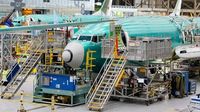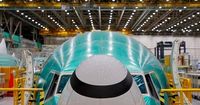After years of turbulence marked by fatal crashes, production flaws, and intense regulatory scrutiny, Boeing is set to regain a crucial role in certifying the safety of some of its most important aircraft. The Federal Aviation Administration (FAA) announced on September 26, 2025, that the aerospace giant will once again be permitted to issue airworthiness certificates for certain 737 Max and 787 Dreamliner planes, starting Monday, September 29. This move signals a cautious but significant step toward normalization for Boeing, whose reputation and operations have been under a cloud since 2019.
Airworthiness certificates serve as a seal of approval, confirming that each new plane is built to specification and safe to fly. For years, the FAA has delegated some certification responsibilities to manufacturers, but Boeing lost this privilege for the 737 Max in 2019 after two catastrophic crashes and for the 787 in 2022 due to persistent production quality concerns. According to the FAA, the new arrangement will see Boeing and the agency alternating weeks in issuing the certificates, a system designed both to restore some efficiency and to maintain a high level of oversight.
“Safety drives everything we do, and the FAA will only allow this step forward because we are confident it can be done safely,” the agency stated in its Friday news release. “The FAA will continue to maintain direct and rigorous oversight of Boeing’s production processes.” As reported by KIRO Newsradio, the FAA emphasized that inspectors will now be able to focus more closely on surveillance and quality assurance within Boeing’s assembly lines.
The decision comes after 18 months of what the FAA described as “intense oversight and scrutiny,” spurred not only by the legacy of the 737 Max tragedies but also by a series of more recent quality and safety lapses. The most high-profile incident was the January 2024 blowout of a paneled-over exit door on a 737 Max during an Alaska Airlines flight. Although no one was seriously injured, the event triggered an embarrassing government-led investigation and renewed public concern over Boeing’s manufacturing practices. The National Transportation Safety Board ultimately concluded that Boeing failed to “provide adequate training, guidance and oversight” to its workers, while also criticizing the FAA for not keeping a closer watch on the company.
In response to these events, Boeing pledged sweeping reforms to its quality and safety controls. The company also faced a $3.1 million fine from the FAA for safety violations that occurred between September 2023 and February 2024. Over the past year and a half, several whistleblowers stepped forward to highlight ongoing problems with Boeing’s protocols, particularly in relation to the 737 Max and 787 production lines. These revelations, along with mounting regulatory pressure, forced Boeing to confront deep-seated cultural and operational issues.
The company’s legal woes have also been significant. After the Biden administration’s Department of Justice determined that Boeing’s recent safety lapses violated an earlier plea agreement, Boeing agreed to plead guilty last year to its role in the two fatal 737 Max crashes that claimed 346 lives. Notably, the Trump administration had previously chosen to drop its criminal case, a decision that some critics saw as emblematic of a softer approach toward corporate malfeasance. This political backdrop has added another layer of complexity to the ongoing debate over how best to ensure aviation safety while supporting American manufacturing.
Industry analysts have generally welcomed the FAA’s decision, albeit with caution. “This is great news,” said Scott Hamilton, an aviation analyst with the Leeham Company, speaking to KIRO Newsradio. “It’s been a long time coming. It’s understandably been a long time coming, but this oversight by the FAA has been a lot of what’s held Boeing back in its recovery.” Hamilton noted that the FAA would be closely monitoring Boeing’s work as the new system takes effect. “There’s no way that the FAA was going to just turn off the switch so to speak of their oversight,” he added. “They clearly have to become confident that the authority being turned back over to Boeing is going to be a successful transition going forward.”
The alternating-week arrangement is not just a bureaucratic compromise. According to the FAA, it will allow agency inspectors to devote more time to “rigorous” quality checks on the production line—a move seen as essential following the scrutiny over last year’s panel blowout and the subsequent production cap. After the January 2024 incident, the FAA limited Boeing’s 737 Max output to 38 planes per month. While Boeing only recently reached this cap in the second quarter of 2025, the company has signaled its intent to seek permission to ramp up production. The FAA, for its part, has stated that any such request would be subject to “extensive planning and reviews” to ensure safety remains paramount.
Meanwhile, Boeing’s commercial prospects appear to be improving. The FAA’s announcement coincided with news that Turkish Airlines plans to purchase 75 Dreamliners and is considering up to 150 more 737 Max jets, which would constitute the largest single order for the model if finalized. Norwegian Group, which operates Norwegian Air Shuttle and regional carrier Widerøe, also placed an order for 30 Boeing 737 Max 8 planes. These developments have buoyed Boeing’s stock price and provided a much-needed vote of confidence from international customers.
Yet, skepticism remains about whether Boeing’s internal reforms are sufficient to guarantee the safety of its aircraft. The practice of delegating certification authority to manufacturers has been widely criticized in the wake of the Max crashes, with some experts and lawmakers arguing that the system creates conflicts of interest. Boeing has said it has made changes to better shield its employees who serve as FAA designees from management pressure, but a congressional expert panel found last year that opportunities for retaliation still exist. This lingering concern underscores the delicacy of the FAA’s current approach: balancing the need for industry efficiency with the imperative of public safety.
The FAA’s decision does not mark a full return to business as usual. The agency has made clear that it will continue to exercise “direct and rigorous” oversight, and that the restoration of Boeing’s certification authority is both limited and provisional. Should Boeing seek to increase production or expand its certification role, the company will face further scrutiny and must demonstrate that its reforms are more than just window dressing.
For Boeing, this partial restoration of trust is a pivotal moment. The company’s ability to move forward—both in terms of production and reputation—depends on its willingness to embrace transparency and prioritize safety above all else. As the FAA and Boeing embark on this new chapter, the eyes of regulators, airlines, and the flying public will be watching, eager to see whether the lessons of the past have truly taken root.






